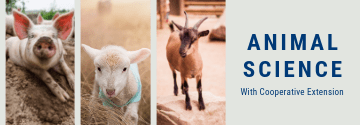While never the preferred outcome, humane euthanasia plays a key role in animal care and veterinary medicine. For bovine practitioners working in the field, euthanasia of cattle often involves using a firearm or a captive-bolt device. Recommendations for placement of the bullet or bolt can, however, create some confusion and potentially affect efficacy of the procedure.
During the recent Academy of Veterinary Consultants conference, Iowa State University veterinarian Renee Dewell, DVM, MS, presented a simple way to determine the optimal point of entry for euthanizing cattle with a firearm or captive-bolt device.
Dewell credits a team including Dr. Eric Rowe and Mr. Wolfgang Weber from the anatomy division at ISU, Dr. Dee Griffin from the University of Nebraska, ISU Extension veterinarian Grant Dewell and Mr. Doug Bear, Iowa BQA Coordinator, for working together to provide a rationale and validate an easier way to describe the ideal entrance point for a bolt or bullet.
Dewell’s team suggests that the operator simply aim the bullet or captive bolt towards the base of the tongue at the midpoint of a line drawn between the base of each ear.
Dewell said the project was initiated after several members of the group related incidents where they observed those responsible for euthanasia struggling with firearm or captive bolt euthanasia because of difficulty in rapidly and correctly locating the point of entry. “Veterinarians and others responsible for euthanasia are tasked with dispatching an animal as quickly and humanely as possible. A method to rapidly and accurately locate the optimal point of entry for a bullet or captive bolt may simplify the procedure and result in less stress for both the person conducting the euthanasia procedure as well as the animal.” Says Dewell.
Dewell acknowledges there are several existing descriptions to locate the optimal point of entry, all targeting the brainstem. While Dewell and her group don’t dispute the validity of them, the group contends that some techniques to determine the point of entry may be difficult to remember, require multiple steps, need to be adjusted based on breed type, and may be challenging in polled cattle when the suggested protocol uses horns as a landmark. Dewell also noted that the recent PRRS (swine) and HPAI (poultry) outbreaks have invigorated efforts within the cattle industry to plan for a swift and effective response during a disease outbreak. Dewell stated that depopulation would likely be considered in some disease scenarios as part of a response effort and emphasized that preference should be given to the use of depopulation techniques and strategies that are most likely to minimize human psychological stress and support animal welfare.
“Several team members had already been successfully using the ears to help determine the point of entry and we had discussed this concept with others but none of us was aware of any scientific support for this idea.” In addition, she says she and several team members had observed packing plant personnel use the ears as landmarks when stunning. “Packing plants may process more than 350 head per hour. Rapid and accurate stunning is absolutely critical to protect human safety, support a high standard of cattle welfare, and maintain the projected kill rate. Plant personnel who are responsible for stunning use a captive bolt far more than veterinarians or other cattle caretakers. Even though the captive bolts used in packing plants are non-penetrating, the intended point of entry is comparable to that for penetrating captive bolts and firearms.”
The team is confident that their suggested technique is both reliable and broadly applicable to the bovine species because of the relationship of cranial nerves between the brainstem and external acoustic meatus as well as the comparable brain size in cattle regardless of maturity. Dewell expressed gratitude for the expert anatomical input provided by Rowe and Weber as well as the fact that bovine cranial nerve and head skeletal anatomy have already been well documented in the literature. These established anatomical parameters are common to the bovine species regardless of age, gender, presence/absence of horns, or breed type. They used this existing knowledge to explain the suggested protocol and then demonstrated it using specially prepared prosections.
Dewell summarized the presentation by emphasizing the importance of appropriate ammunition and equipment, proper animal restraint. She also reminded us that the AVMA’s Euthanasia Guidelines strongly recommended a reliable and humane adjunct method be used following the use of captive bolt.
Credit Iowa State University


